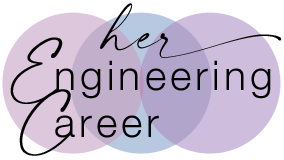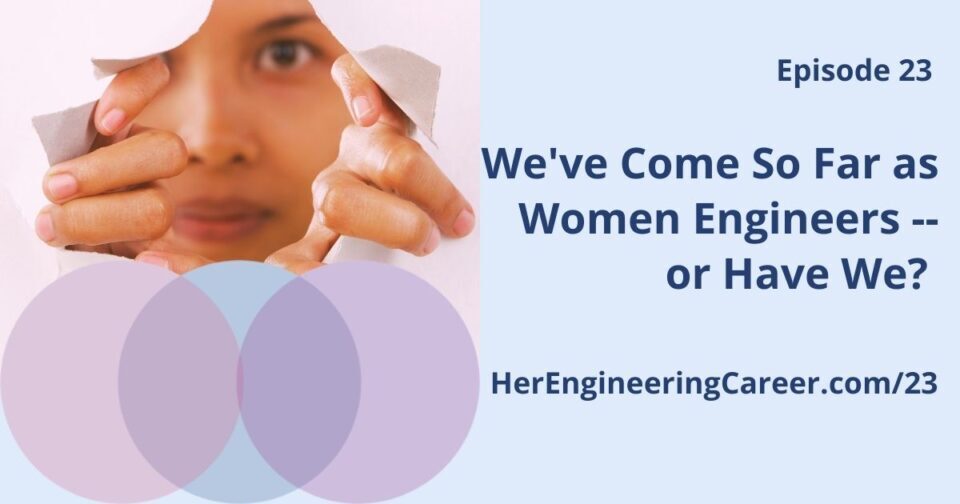Show Notes
I watched “Picture a Scientist” not too long ago on PBS. It’s an excellent documentary about discrimination against women scientists. I recommend you see it.
The show’s creators, Sharon Shattuck and Ian Cheney, did a great job of capturing what many women face in the science workplace.
They highlighted that words and actions fueled by bias and stereotype keep women in the science community from accomplishing their goals and reaching their dreams.
In the STEM fields, there are relatively few women scientists. But there are even fewer women engineers. I can relate to this documentary.
Shattuck and Cheney used an iceberg analogy to refer to the types of discrimination that women scientists face.
Incidences of discrimination above the waterline are blatant and unmistakable, such as the brutal verbal and emotional abuse suffered by geologist Dr. Jane Willenbring from her research professor.
In the iceberg analogy, there is much more below the waterline than above it. That is, the more common incidents of discrimination are below the waterline. They’re subtle, but still undermining, uncomfortable, and distressing.
Examples from “Picture a Scientist” include the unfair practices at MIT encountered by molecular biologist Dr. Nancy Hopkins and the subtle exclusions encountered by analytical chemist Dr. Raychelle Burks.
Incidences below the waterline are seemingly no big deal. They are dismissed all the time – even by women themselves who don’t want to draw the wrong kind of attention over something so subtle.
These are incidences like not being included on an email, obscene gestures, not being invited to collaborate, remarks about bodies, etc.
But, subtle or not, it’s still discrimination. Like we talked about in Episode 16 about why women leave engineering, getting work done and making progress in your career while constantly dealing with these “subtle” incidences is not easy.
When I began my engineering career three decades ago, it was hard to deal with the attitudes and the comments, spoken and unspoken. It’s exhausting!
In the show they referred to facing a headwind. Dr. Willenbring’s story about trying to climb a gravel-covered slope was a great analogy for the overall career struggles of women scientists and engineers.
I felt I had to always be on my guard. It caused me to lose trust in people, to put up extra armor to protect myself. It caused me to second guess – and sometimes give up on – potential opportunities.
I didn’t know how to handle that stress very well. At the time I thought that was just how it had to be. I also thought things could only get better. But…have they?
The Change in Organizational Climate for Women Engineers over 3 Decades
According to the US Census Bureau, the number of women in engineering is only 15%, representing an increase of only a few percentage points between 1990 and 2019. And the number of women in computing actually dropped in that timeframe.
Thirty years later, we’re still talking about many of the same issues. This is evident in the documentary. And it’s quite disappointing. It makes me wonder, have we made any progress at all? And is it helping you?
Looking back, though, I do think there’s a subtle difference between then and now. I think the issues have evolved somewhat.
When I started my job at the lab, the focus for me and for many women engineers was getting in. Getting a foot in the door. And while the door wasn’t closed exactly – like it was in previous decades – it wasn’t completely open either.
We wanted just to be allowed to be there. I was concerned with things like:
- How to blend in. How to be an engineer like the men are engineers. How to not be too different.
- How to show competence. How to convince others that I can do this job.
- How to manage a family while excelling as an engineer – without drawing attention to the priorities of parenthood.
Today we place more emphasis on being included as ourselves and contributing who we are and what we have. While the issues are similar, I’m guessing you’re more concerned with:
- How women engineers contribute and lead.
- How to get acknowledgement and recognition for your work.
- The level of support you’ll get for work and life integration.
- Availability of opportunities and upward mobility. Mentorship and sponsorship. Fairness of salaries.
- Inclusion: Can I be myself and still be included?
So there have been some subtle changes.
The use of the word “inclusion” in this context is fairly recent. 30 years ago, we didn’t use that word. Again we were more worried about getting in, getting the job. The idea of inclusion came much later.
Back in October I attended the WE21 conference in Indianapolis. Looking through the session tracks, you see headers like Advocacy and Diversity, Equity and Inclusion. You wouldn’t have seen these 30 years ago. These kinds of ideas were just emerging.
Thirty years later, we’re talking about the discrimination of women in science and engineering more. Now there is emphasis on bias awareness and the topics of advocacy and DE&I. Events in the last couple years have raised awareness of these issues and spurred action for the better.
But I expected more in 30 years. I never dreamed that we would still be struggling to feel included in the engineering field. I thought the organizational climate would be welcoming to women engineers by now.
I thought people would be able to “picture an engineer” with less bias and stereotype.
Nevertheless, the women before you have set the stage. And now you can take it from here. And even if it’s not your intent, you will make progress and set the stage for the women who follow you.
Resources:
Trailer for Picture a Scientist. The documentary is available through a couple streaming sources, so google it to find out how to watch online in your area.
WE21 conference – You can still get access to the virtual content. You need to register, but as of this writing you can get a 50% discount on the price by using the code WE21POSTSHOW.
Census Bureau Article. Here you can get more data about women in STEM fields.
Check out from my website!
- Strategy sessions are available. These are 90-minute focused sessions during which we can discuss a topic of your choice related to your engineering career. Great when you need to get unstuck, brainstorm, or get new perspective on a particular issue.
- Explore my Signature Program. I offer a thoughtful and experienced approach to coaching and strategy tailored for your engineering career needs. You’ll find my signature program will catapult your career with a significant return on your investment.
- Sign up for my email list and get a free copy of my guide 4 Steps to Start Commanding Greater Influence and Impact as a Women Engineer. Subscribers get a weekly message about my latest podcast episode.
Recap: Today we took a look at how far women have come in engineering in the last few decades.
By way of review of the documentary “Picture a Scientist,” we talked about the issues women face in science and engineering. Next we compared then and now, how these issues have changed over the years.
Next time on Her Engineering Career Podcast, we’ll start looking into work and life integration, a topic I know many of you have been waiting for. I’ll be back next week with Episode 24.

